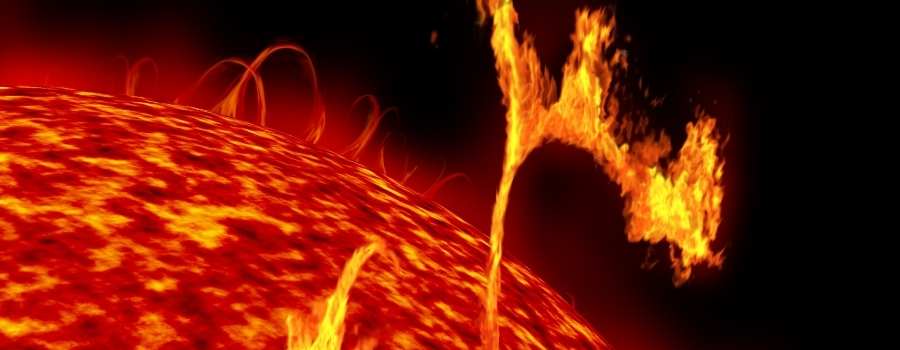
Solar irradiance is one of the most important factors to consider when installing a solar energy system. Knowing how much sunlight your property receives will help you choose the right-sized system and determine whether solar is a good investment for you.
Many people know that they need to do their homework when it comes to solar panels and know that different areas within the United States and around the world receive different amount of sunlight, but they don’t always realize that this sunlight can have different levels of intensity. I started doing a little digging and put together the information that I learned.
What Is Solar Irradiance?
Solar irradiance is the amount of solar radiation received per unit of surface area, generally given in kilowatts per meter squared. It should not be confused with solar radiation, which is the amount of radiant energy emitted by the Sun.
I want to unpack solar irradiance a little more, but there are also some related terms that should be explored as well as some terms that can easily be confused for solar irradiance.
- Solar Irradiance
- Insolation
- Solar Spectral Irradiance
Solar Irradiance
There are a number of different ways to think about, quantify, and work with the amount of energy emitted by the Sun or received on Earth, but solar irradiance is important for calculating how much solar energy you can expect in your area.
It’s also worth noting that not all solar radiation will reach Earth, and not all solar radiation that does reach Earth will get to the planet’s surface and contribute to solar irradiance.
About 29% of the Sun’s energy is immediately deflected away into space at the Earth’s outer atmosphere by ionized atmospheric particles, clouds or brightly reflective ground cover such as snow or sea ice. Another 23% of incoming solar energy will be absorbed by atmospheric water vapor, ozone or dust particles. What remains will be included in our measurement of solar irradiance at a given point on Earth.
Insolation
Solar irradiance may be integrated over time to give the amount of radiant energy released into an area during a given time period, and measured in joules per square meter. Integrated solar irradiance is often called solar irradiation, solar insolation, or just insolation.
Solar Spectral Irradiance
Solar spectral irradiance is a measure of the Sun’s irradiance at a given wavelength of light in the electromagnetic spectrum. Spectral irradiance varies between different wavelengths of EM radiation from visible and infrared, through to ultra-violet and X-ray.
Spectral irradiance is an important concept because different wavelengths (including colors) of sunlight will be absorbed in different layers of Earth’s atmosphere, producing different effects, and reaching the ground in different amounts.
Visible light and infrared radiation are best able to penetrate the atmosphere and reach the Earth’s surface, producing heat and daylight.
Ultraviolet light reacts with oxygen to create ozone high up in the stratosphere, around 10-25 miles from the ground. This ozone layer then absorbs large amounts of the potentially harmful UV energy before it reaches the surface of the Earth.
Even higher up in the thermosphere and ionosphere, extreme UV (EUV) ionizes atmospheric gases and is absorbed there before it can reach the ground.
Why Is Solar Irradiance Important For Solar Panel Installation?
In general, when you’re planning to install a solar photovoltaic energy system, you will need to work out the wattage and number of solar panels required in your array based on likely solar energy yield, panel efficiency and performance requirements.
Accurate solar irradiance measurements for your location are key to informing calculations. A solar panel array in the Australian outback may be very different to an array in the UK, where there is less insolation, more cloud etc..
Solar irradiance and insolation will vary with a range of factors and these should all be considered before making decisions about solar energy provision and planning. For example:

- Latitude
- Terrain
- Season
- Time of Day
- Atmospheric Conditions
Latitude
Some areas of Earth always receive more solar energy than others during their daylight hours. Sunlight hits the ground most directly at the equator, concentrating these rays on a smaller area. Areas close to the equator may therefore have higher solar irradiance. Closer to the poles rays of sunlight hit the surface on a slant, scattering energy and making it less intense.
Terrain
Depending on weather, higher locations in the same geographic region may receive more solar irradiance than lower locations. Areas which are overshadowed by mountains, forests or buildings will see reduced solar irradiance.
Season
Solar irradiance varies according to seasons, which are caused by the Earth’s tilted axis as it orbits the Sun. Throughout our yearly orbit, the tilt causes direct sunlight to fall more in different locations. This means more sunny weather and solar irradiance for the hemisphere tilting towards the sun and experiencing summer.
Seasons can also entail characteristic weather patterns which influence solar irradiance levels via cloud cover, dust storms, precipitation etc..
Time Of Day
Insolation and solar irradiance vary as the Earth spins on its axis, giving us night and day. At around midday, the Earth will be most directly facing the sun and solar irradiance will be highest. Earlier or later in the day, levels of solar irradiance will be lower. At night, there is no sunlight to give us solar irradiance.
Atmospheric Conditions
Cloud cover, dust levels, and water vapor in the atmosphere can all affect the amount of sunlight reaching the Earth’s surface. Solar irradiance will be highest during periods with clear blue skies.
Volcanic eruptions and pollution can also generate high levels of particles in the atmosphere which significantly reduce the amount of solar energy reaching the ground.
What Can Cause Solar Irradiance Changes?
Solar irradiance isn’t a single constant value at all times in all places, and we have already seen how it is influenced by geography, season, time of day and atmospheric conditions. Solar irradiance also changes cyclically, closely linked to the fact that our Sun does not produce energy at an absolute and unchanging rate.
Wherever we see variance in solar radiation output, we’re likely to see corresponding changes to irradiance at the Earth’s surface.
Sunspot Cycles
One of the most regular solar radiation patterns stems from the 11 year sunspot cycle associated with reversal of the Sun’s magnetic poles. During strong cycles of high solar activity, the Sun’s brightness at solar maximum is around 0.1% higher than at solar minimum.
Gleissberg Cycles
Historical reconstruction of solar cycles dating back to the beginning of sunspot recording in the 1600s reveal further patterns in solar activity and therefore in solar irradiance. Some of the 11-year solar cycles can be more active than others, and the timing of high activity vs low activity cycles isn’t entirely random. 2-3 relatively strong cycles are generally preceded by, and then followed by, 2-3 weaker cycles.
These alternating strong and weak solar activity periods roughly group together into something called Gleissberg cycles, each covering around 100 years. Since sunspot records began we’ve seen three complete Gleissberg cycles from around 1700-1810, 1810-1910, and 1910-2010.
Milankovitch Cycles
Slight regular variations in the Earth’s orbit and positioning relative to the sun also impact the amount of sunlight that reaches the surface of our planet. These predictable orbital patterns are called Milankovitch cycles and each one repeats over a particular period, ranging from tens of thousands of years to hundreds of millennia.
